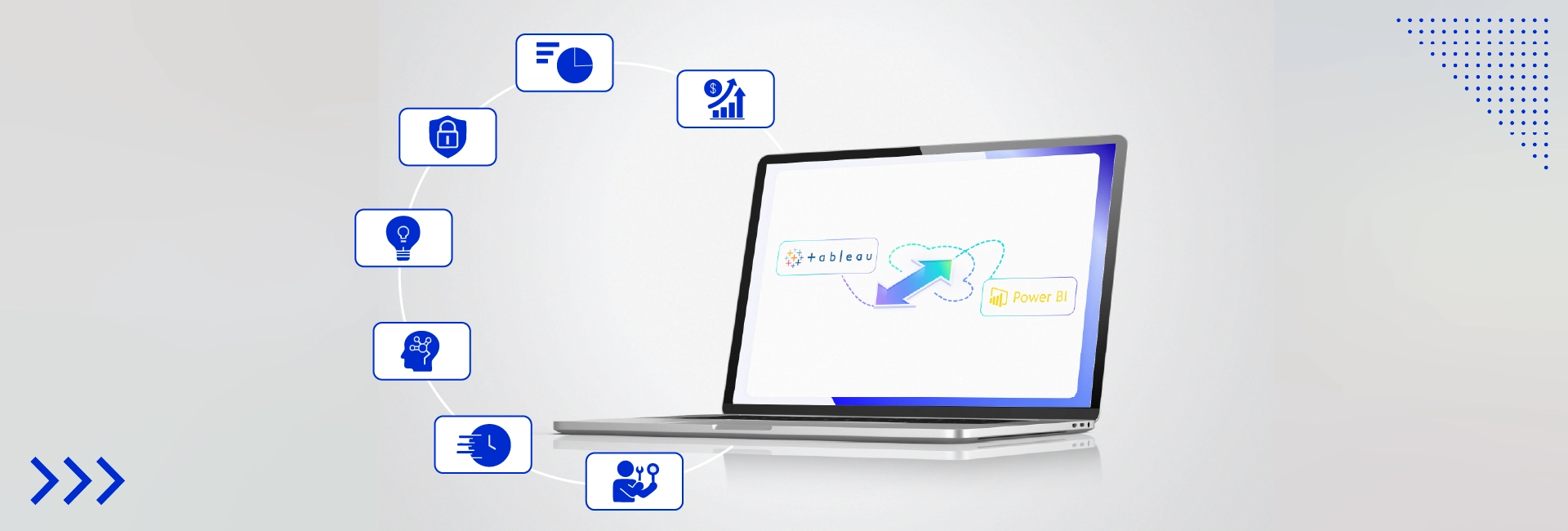We might not know the exact word 'Image Annotation,' but we have been capitalizing on its advantages for so long.
- Healthcare Is Deepening Diagnostic Accuracy with AI and Image Annotation
- The Transportation Sector Evolving to Be Smarter and Safer with Image Labeling Services
- Retailers and E-commerce Platforms Are Understanding Markets Better with Annotated Datasets
- How Are We Contributing to Driving Innovation and Change
Do you remember the last time you gave a restaurant image to Siri (Apple's Voice Assistant) and asked for information? How long has it been since you used your Google Maps to find directions?
It is possible that most of you have done all this just yesterday.
In essence, image annotation is the process of tagging or labeling images within a dataset. This helps AI models identify features in the images that still need to be annotated and take required actions.
So, when you provide an image to Siri, it is processed by its AI and machine learning models. These models were trained through image annotation techniques to recognize patterns and provide insights. For instance, the image of the restaurant might be annotated with labels like 'menu,' interiors,' and' locations.' This helps Siri associate the visual data with relevant information and respond accurately.
Similarly, Google Maps uses knowledge of pre-determined annotated images to understand the instructions and provide location-based services.
However, the impact of image annotation extends beyond day-to-day-life applications and is increasingly becoming recognized across multiple sectors.
According to recent reports, revenue from AI platform software will reach $153.0 billion in 2028, a compound annual growth rate (CAGR) of 40.6%.
Thus, this blog highlights the top 3 industries that are enabling transformation by systematizing the nuances of image annotation. In the next few minutes, you will discover:
- Different types of image annotation
- How they are used to train AI and ML (Machine Learning) models across industries like healthcare, transportation, retail, and E-commerce.
- Use cases and techniques that are synonyms to growth solutions
- How are we contributing to driving innovation and change and much more
Let's dive in.
Healthcare Is Deepening Diagnostic Accuracy with AI and Image Annotation
In the medical field, a considerable amount of data is generated in the form of:
- Patient medical history, including genetic and lifestyle information.
- Medical imaging techniques like X-rays, CT scans, MRI scans, etc.
- Information about prescribed medications, surgeries, interventions, and other medical procedures.
- Documentation from healthcare providers detailing patient encounters and observations, and so on.
These data require thorough analysis to predict disease progression and recovery. Though accuracy in the healthcare industry is paramount, errors are no exception. Also, speed and efficiency have always been limitations for humans. And that's where AI and image annotation step in.
One such intervention is Google DeepMind, which uses deep learning to identify and recommend treatment for 50 eye diseases with 94% accuracy.
However, the significance of image annotation in healthcare industries extends beyond diagnosis and prognosis. It immensely contributes to personalizing medicines, drug discovery and facilitating operational efficiency.
- For instance, Tempus, a tech-driven enterprise, supports oncologists, neuropsychiatrists, cardiologists, and radiologists with data-driven medicine precision to ensure patients are on the right drug at the right time.
- Along the same lines, IBM's Watson for Oncology uses AI to identify and rank potential treatment plans and options.
- In the realm of drug discovery, an AI-based drug discovery company, Insilico Medicine, put in place a system that can identify a potential new drug in just 46 days (about 1 and a half months). This contrasts traditional methods, which can take up to years and a million-dollar investment to introduce a new drug.
Image annotation techniques
Just like professionals who require years of learning and studies to conclude, AI models, too, need training through annotated datasets. Here’s a glimpse of the techniques used.
Bounding Boxes
It is used in medical imaging to locate organs or abnormalities in X-rays, MRIs, and CT scans. For instance, radiologists can use bounding boxes to highlight tumors, fractures, or other anomalies, which AI models can then analyze to assist in diagnosis and treatment planning.
Polygons
It creates more precise boundaries around organs or abnormal growth. For instance, in oncology, polygon annotation can be used to demarcate the boundaries of tumors accurately, enabling more accurate measurements and analysis.
Semantic Segmentation
It involves labeling each pixel in an image with a class, such as different tissues or organs in MRI scans. This technique provides a more detailed understanding of the image than bounding boxes, allowing for the precise illustration of structures.
3D Cuboids
This technique involves drawing cuboids around objects to their length, width, and depth. It extends bounding boxes into three dimensions, making them useful for annotating volumetric data from CT or MRI scans.
Line Annotation
In this method, lines are drawn along structures, such as blood vessels or neural pathways, to assist in their analysis. This technique highlights linear features within an image, making it easier for AI models to recognize and analyze these structures.
The Transportation Sector Evolving to Be Smarter and Safer with Image Labeling Services
Deep learning’s relevance in the transportation industry cannot be overstated. From road carriers to aviation and shipping, the advent of AI has made a real difference in ground operations.
- For instance, Uber employed AI to improve its understanding of cities and their traffic, match riders with drivers, make rides safer, predict the arrival and drop-off times, and much more.
- Similarly, machine learning is extensively used in the aviation industry to govern increasing air traffic and predict maintenance needs. Such as, an English startup, easyJet, has successfully deployed AI-driven software developed by Aerogility. This new maintenance planning platform enables better long-term planning and quick response to operational challenges in increasing aircraft availability for passengers.
- Another area where next-gen technology is making transportation intelligent is railways and shipping. According to a recent report on the journey towards AI-enabled railway companies, rail companies have already started implementing AI for around 20 business priorities, such as on-time performance, customer engagement, safety, and operational performance.
- In shipping, AI is inevitable in equipment and vessel maintenance, port density and traffic management, navigation and route optimization, fuel consumption, and many more.
Image annotation techniques
The concept of automation in transportation dates to 1939 when General Motors introduced the idea of an automated highway supporting self-driving cars at the New York World’s Fair.
But it is only recently that abstractions like image annotation came into being that has further revolutionized this sector. Here’s a glimpse of some of the widely used techniques.
KeyPoint Annotation
It is used in driver monitoring systems to track facial features and detect signs of distraction. Key features such as facial landmarks or other critical points are also tracked and identified using the KeyPoint annotation technique.
Polyline Annotation
It involves drawing connected lines to annotate paths or boundaries and is mostly used in autonomous vehicles to annotate road lanes and boundaries.
Lines and Splines
It is used to annotate linear structures within images to train autonomous vehicles to stay within designated roads. In this technique, lines represent straight segments, while splines are smooth curves defined by control points.
Landmark Annotation
It involves identifying and marking specific landmarks or features within an image. It is used in navigation systems to recognize landmarks and improve route planning. Also, it is helpful in facial recognition for driver identification.
Retailers and E-commerce Platforms Are Understanding Markets Better with Annotated Datasets
Market research states that AI in retail is expected to reach 57.8 billion USD by 2030 at a CAGR of 41% from 2023 to 2030.
The recognized influence of data analytics and machine learning drives this progress of AI in the retail and E-commerce industry. Moreover, the shift towards multichannel and omnichannel retailing strategies has further intensified the need for technological advancement.
In retail and E-commerce, the success of AI depends greatly on image annotation. From better product categorization to enhancing visual search and quality control, annotated datasets help shoppers have a more personalized experience.
Big E-commerce giants like Amazon, eBay, Alibaba, Walmart, etc., have begun implementing image labeling to:
- Tag products with relevant information, like color, brand, size, type, etc.
- Recommend similar or complementary products.
- Take photos of items they want to buy, and the app will find similar products available for purchase.
- Improve the relevancy of search results.
- Automatically categorize products into the correct categories.
- Maintain accurate stock levels and simplify warehouse operations.
- Virtually try on products like clothing and accessories.
Image annotation techniques
Let's examine some of the most commonly used image annotation techniques in E-commerce and retail industries.
Image Classification
It assigns a single label to an entire image based on its content. It is used for tasks that require identifying an image's overall category. This technique is mostly used for product categorization and visual search.
Object Detection
It helps identify and locate multiple objects within an image. Combining both classification and localization, this technique provides a comprehensive understanding of the image. In warehouses, it is used to detect and track products, ensuring accurate stock levels and efficient operations.
Instance Segmentation
Instance segmentation helps in tagging multiple instances of the same product in an image, improving the accuracy of product categorization and search. An online store might use instance segmentation to tag different colors of the same shirt in a single image.
Landmark Annotation
Landmark annotation marks critical points on the face or body, allowing virtual try-on applications to accurately place clothing or accessories on the customer. It helps pinpoint specific features of products, such as buttons or logos, enhancing the product description and search capabilities.
How Are We Contributing to Driving Innovation and Change
For us, image annotation is more than a technical task; it’s a critical enabler of technological advancement across various sectors. In our partnership with an Insurtech organization, we have demonstrated how this process can drive innovation and foster change.
Faced with the challenge of creating a diverse dataset for AI-driven hazard detection, we went beyond conventional methods by generating 4,000 synthetic images that captured a wide range of real-world conditions. This approach allowed us to train AI models with high precision, significantly improving their ability to detect potential hazards.
However, our team’s efforts didn’t stop at just image annotation. We enhanced operational efficiency by processing 6,000 leads in just one day, far exceeding the initial target.





